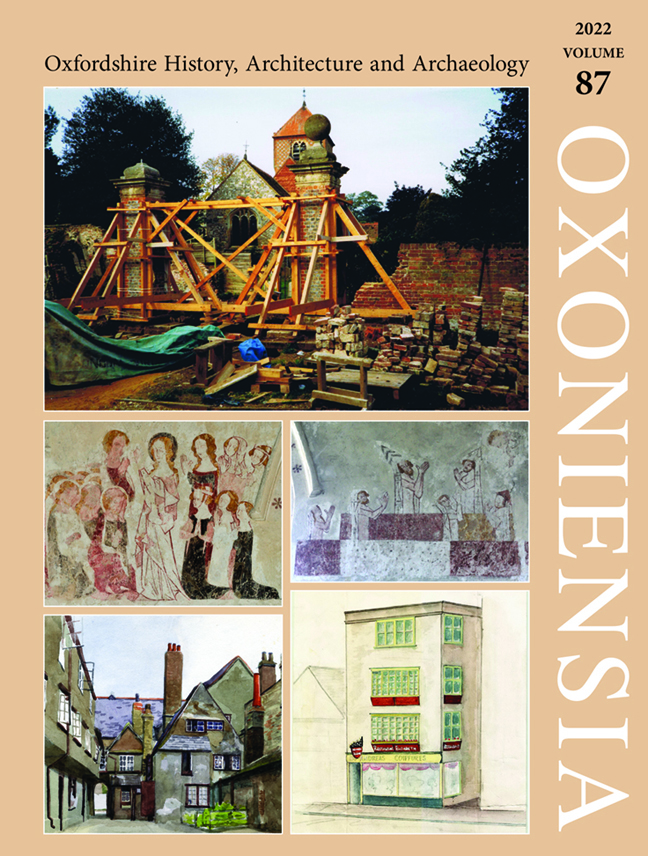Farming in the Vales: Middle Bronze Age Farming and a Late Iron Age/Romano-British Settlement at Grove Airfield
Published online by Cambridge University Press: 17 February 2024
Summary
SUMMARY
Excavations on the former Grove Airfield in 2018 revealed evidence of multi-period land use and agriculture. A middle Bronze Age field system and possible stock enclosures were discovered alongside some artefacts and charred plant remains. A seemingly isolated inhumation burial provided limited evidence of activity during the late Bronze Age. In the late Iron Age/early Roman period, new land boundaries were established and signs of habitation included a possible roundhouse. The settlement was reorganised during the second century AD and was enlarged in the third century, having a formal rectilinear layout with several enclosed areas and post-built structures. Two inhumation burials of possible early Roman date are indicative of rural burial practices in a non-cemetery context. By the fourth century the settlement appears to have become more open, with a shift towards more intensive arable production and crop processing signified by the construction of a large corndryer and greater quantities of charred plant remains. The settlement was abandoned by the end of the fourth century.
In 2018 Oxford Archaeology (OA) undertook an archaeological excavation exposing c.1.9 ha on the former Grove Airfield to the north of Wantage, centred at NGR SU 3922 8948 (Fig. 1). The excavation was carried out to investigate Bronze Age, Iron Age and Roman features discovered during three previous trial-trench evaluations, and was undertaken in advance of housing development by Persimmon Homes Ltd. The site is situated within the Vale of White Horse, which is separated from the Oxford clay vale to the north by the intervening Oxford Heights, also referred to as the Corallian Ridge.
The excavation revealed the remains of a middle Bronze Age field system with livestock enclosures. Features dating to this period produced pottery belonging to the Deverel-Rimbury tradition (c.1600–1150 cal BC), which together with small quantities of fired clay and animal bones, indicate ephemeral traces of domestic settlement, perhaps focused on livestock husbandry given the lack of cereal remains. Some disarticulated human bone was also recovered suggestive of local burial practice.
A crouched inhumation burial was placed within the corner of one of the middle Bronze Age enclosures and was radiocarbon dated to the tenth century BC, placing it in the late Bronze Age. It is possible that some remains of the middle Bronze Age division had remained extant and continued to have had some significance into this later period.
- Type
- Chapter
- Information
- Oxoniensia , pp. 195 - 248Publisher: Boydell & BrewerPrint publication year: 2022

